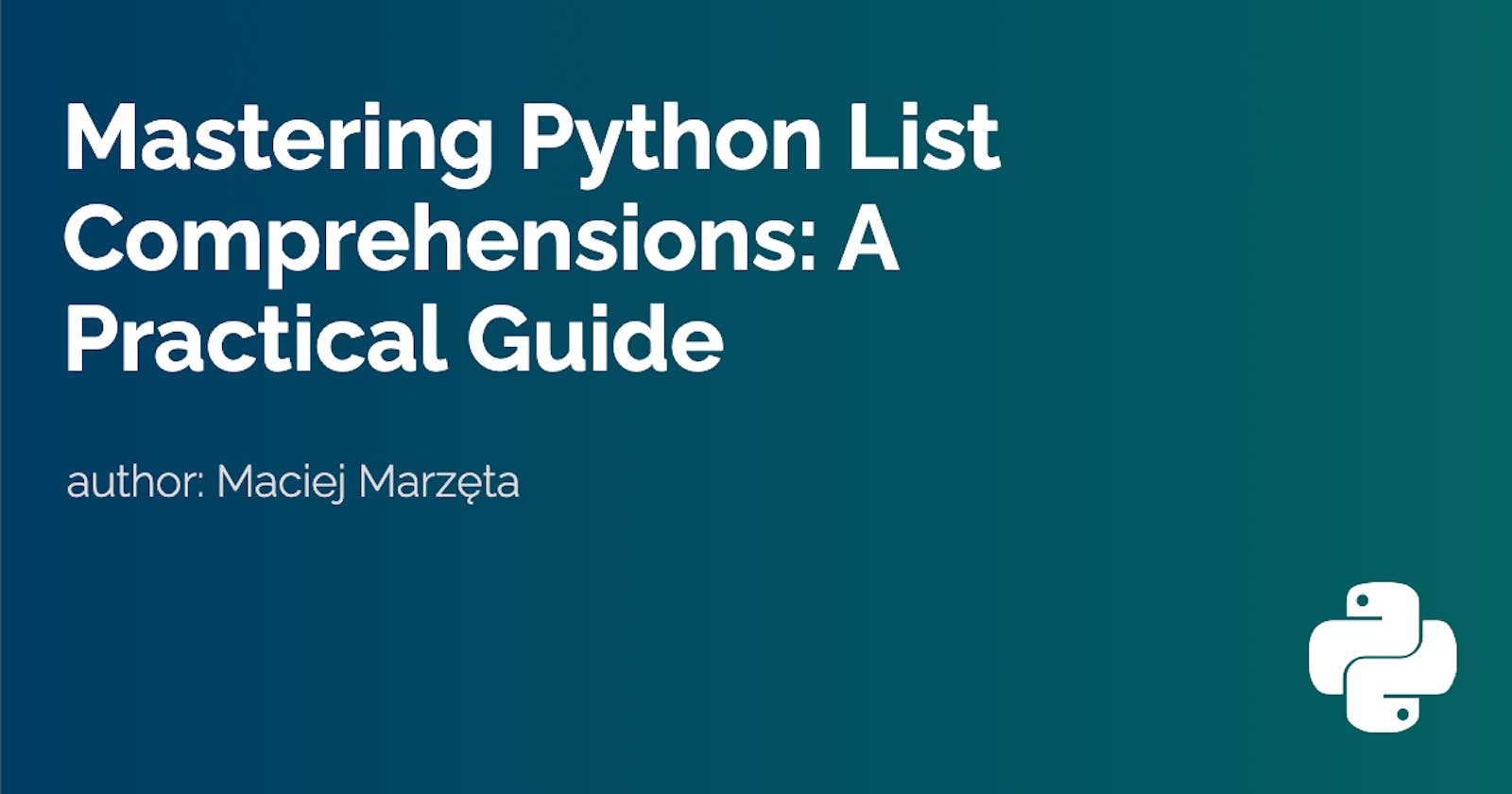Welcome to this practical guide on mastering Python list comprehension! Python is known for its readability and elegant syntax, and list comprehensions are an excellent way to write clean, efficient code. In this blog post, we'll explore list comprehensions in detail and provide real-life examples to help you become a Python pro! So let's dive in! 💻🌟
What are list comprehensions? 🤔
List comprehensions are a concise way to create lists in Python. They provide an alternative to the traditional for-loop method, making your code more readable and efficient. The basic syntax for a list comprehension is:
[expression for item in iterable if condition]
Basic List Comprehension Examples 📚
Let's look at some basic examples to understand the structure of list comprehensions:
Squaring numbers in a list:
- Using a for loop:
pythonCopy codenumbers = [1, 2, 3, 4, 5]
squares = []
for x in numbers:
squares.append(x * x)
print(squares) # Output: [1, 4, 9, 16, 25]
- Using a list comprehension:
numbers = [1, 2, 3, 4, 5]
squares = [x * x for x in numbers]
print(squares) # Output: [1, 4, 9, 16, 25]
In this example, the list comprehension is more concise and easier to read. It eliminates the need for an explicit loop and an append() operation.
Filtering even numbers from a list:
- Using a for loop:
numbers = [1, 2, 3, 4, 5, 6, 7, 8, 9, 10]
even_numbers = []
for x in numbers:
if x % 2 == 0:
even_numbers.append(x)
print(even_numbers) # Output: [2, 4, 6, 8, 10]
Using a list comprehension:
numbers = [1, 2, 3, 4, 5, 6, 7, 8, 9, 10] even_numbers = [x for x in numbers if x % 2 == 0] print(even_numbers) # Output: [2, 4, 6, 8, 10]
Here, the list comprehension clearly expresses the intent of filtering even numbers from the list, making the code more readable and compact.
Nested List Comprehensions 🎯
List comprehensions can be nested to perform complex operations. Let's look at an example:
Flattening a nested list:
- Using a for loop:
nested_list = [[1, 2, 3], [4, 5, 6], [7, 8, 9]]
flat_list = []
for sublist in nested_list:
for item in sublist:
flat_list.append(item)
print(flat_list) # Output: [1, 2, 3, 4, 5, 6, 7, 8, 9]
- Using a list comprehension:
nested_list = [[1, 2, 3], [4, 5, 6], [7, 8, 9]]
flat_list = [item for sublist in nested_list for item in sublist]
print(flat_list) # Output: [1, 2, 3, 4, 5, 6, 7, 8, 9]
As you can see, list comprehension reduces the need for nested loops and makes the code more concise and easier to read.
In conclusion, list comprehensions offer several benefits over for or while loops, such as improved readability, conciseness, and efficiency. They allow you to express complex operations in a single line, making your code easier to understand and maintain.
Real-life Examples of List Comprehensions 🌐
Now let's take a look at some real-life examples where list comprehensions can make your code cleaner and more efficient:
- Removing vowels from a string:
text = "Hello, World!"
vowels = "aeiouAEIOU"
filtered_text = ''.join([char for char in text if char not in vowels])
print(filtered_text) # Output: "Hll, Wrld!"
- Calculating the word lengths in a sentence:
sentence = "Mastering Python List Comprehensions"
word_lengths = [len(word) for word in sentence.split()]
print(word_lengths) # Output: [9, 6, 4, 13]
Summary
In this blog post, we covered the basics of Python lists comprehensions, their syntax, and various examples to help you understand their power and elegance. We also looked at real-life scenarios where list comprehensions can make your code cleaner and more efficient. By mastering list comprehensions, you'll be able to write more readable and concise Python code, enhancing your programming skills. Keep practicing and experimenting with list comprehensions, and you'll soon become a Python pro! 🌟💪
Happy coding! 🚀🐍

